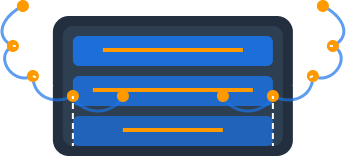DynamoDB vs MongoDB: Which NoSQL Database Is Right for You?

DynamoDB vs MongoDB: Which NoSQL Database Is Right for You?
When it comes to choosing a NoSQL database for your next project, Amazon DynamoDB and MongoDB often top the list of options. Both are powerful, scalable solutions that have gained massive popularity, but they serve different needs and come with distinct trade-offs.
In this comprehensive comparison, we’ll explore the key differences between DynamoDB and MongoDB to help you make an informed decision for your specific use case.
Overview: DynamoDB vs MongoDB
| Feature | Amazon DynamoDB | MongoDB |
|---|---|---|
| Type | Fully managed AWS NoSQL database | Document-oriented NoSQL database (self-hosted or Atlas) |
| Data Model | Key-value with document support | Document-oriented (BSON) |
| Item Size Limit | 400KB per item | 16MB per document |
| Hosting Options | AWS only | Self-hosted, MongoDB Atlas (multi-cloud) |
| Consistency | Strong or eventual consistency | Configurable read concern levels |
| Pricing Model | Pay-per-request or provisioned capacity | Instance-based or Atlas tiers |
Data Model & Schema Flexibility
DynamoDB
DynamoDB uses a key-value model with optional document support. Each table requires a primary key, which can be a simple partition key or a composite of partition and sort keys. While it supports JSON documents, it comes with limitations:
- 400KB maximum item size
- No native date type (requires workarounds)
- Limited data types compared to MongoDB
- No support for nested arrays beyond 32 levels
DynamoDB typically requires more upfront data modeling with a single-table design approach for optimal performance. This means carefully planning your access patterns and potentially denormalizing data.
MongoDB
MongoDB is a true document-oriented database that stores data in BSON (Binary JSON) format. It offers significantly more flexibility:
- Documents up to 16MB in size
- Rich data type support (including dates, ObjectIDs, decimal128)
- Deeply nested documents and arrays
- Dynamic schema that allows different documents to have different fields
MongoDB’s flexibility means you can start development without fully defining your schema, making it ideal for projects where requirements may evolve.
Dynomate: Modern DynamoDB GUI Client
Built for real developer workflows with AWS profile integration, multi-session support, and team collaboration.
No account needed. Install and start using immediately.
- Table browsing across regions
- Flexible query & scan interface
- AWS API logging & debugging
Performance & Scalability
DynamoDB
DynamoDB excels at delivering consistent, single-digit millisecond performance at virtually any scale. It automatically partitions your data and traffic across servers, with AWS handling all the scaling operations behind the scenes.
Key performance advantages:
- Truly serverless architecture
- Automatic scaling with no performance degradation
- Predictable performance regardless of database size
- Global tables for multi-region replication
However, this performance comes with constraints on query patterns. Operations that don’t use the primary key or defined indexes will require full table scans, which become expensive and slow as your data grows.
MongoDB
MongoDB delivers high performance for a wide range of workloads, with more flexible querying capabilities. It can be scaled in several ways:
- Vertical scaling (larger instances)
- Horizontal scaling via sharding
- Read scaling with replica sets
When properly configured, MongoDB can handle substantial workloads, but it requires more expertise to optimize and scale effectively. With MongoDB Atlas, many scaling operations are automated, but you’ll still need to choose instance sizes and manage your cluster configurations.
Ecosystem & Integrations
DynamoDB
DynamoDB is deeply integrated with the AWS ecosystem, providing seamless connections to:
- AWS Lambda for serverless computing
- Amazon API Gateway
- AWS Step Functions
- CloudWatch for monitoring
- IAM for fine-grained access control
DynamoDB also offers specialized features like:
- DynamoDB Accelerator (DAX) for in-memory caching
- DynamoDB Streams for change data capture
- Global Tables for active-active multi-region deployment
This tight AWS integration makes DynamoDB particularly powerful if your application is already built on AWS.
MongoDB
MongoDB provides more deployment flexibility and a rich ecosystem:
- Available on any cloud provider or on-premises
- MongoDB Atlas works across AWS, Azure, and Google Cloud
- Rich query language with aggregation pipeline
- Change streams for real-time data changes
- Text search and geospatial queries built-in
MongoDB’s flexibility makes it ideal for avoiding vendor lock-in or for organizations with multi-cloud strategies.
Operational Considerations
DynamoDB
DynamoDB eliminates nearly all operational overhead:
- No servers to manage
- No software to install or patch
- No backups to schedule (automated with PITR)
- No cluster management or scaling operations
This zero-maintenance approach lets developers focus entirely on application development rather than database operations.
MongoDB
MongoDB’s operational requirements depend on your deployment choice:
Self-hosted MongoDB:
- You manage the entire infrastructure
- Responsible for backups, upgrades, security
- Need to handle scaling, sharding, replication
- Requires database administration expertise
MongoDB Atlas:
- Reduces operational overhead significantly
- Still requires choosing cluster tiers
- Some management of indexes and optimization
- More control but also more decisions
Pricing Models
DynamoDB
DynamoDB offers two pricing models:
-
On-demand capacity mode: Pay per request, ideal for unpredictable workloads or development. Can scale to zero when not in use.
-
Provisioned capacity mode: Pre-allocate read and write capacity units at a lower cost. Good for predictable workloads.
You pay for:
- Read capacity units (RCUs)
- Write capacity units (WCUs)
- Storage used
- Optional features (global tables, backups, etc.)
DynamoDB can be extremely cost-effective for low-traffic applications or those with variable loads, but costs can grow linearly with usage for high-throughput applications.
MongoDB
MongoDB pricing depends on your deployment choice:
Self-hosted:
- Infrastructure costs (servers, storage, networking)
- Operational staffing costs
- May be more cost-effective for very large, steady workloads
MongoDB Atlas:
- Tiered pricing based on instance size and features
- More predictable than DynamoDB for high-throughput applications
- Always has some baseline cost (can’t scale to zero)
- Additional charges for backups, data transfer, etc.
For consistently high-volume workloads, MongoDB might offer more predictable pricing, while DynamoDB often wins for variable or low-volume scenarios.
Familiar with these Dynamodb Challenges ?
- Writing one‑off scripts for simple DynamoDB operations
- Constantly switching between AWS profiles and regions
- Sharing and managing database operations with your team
You should try Dynomate GUI Client for DynamoDB
- Create collections of operations that work together like scripts
- Seamless integration with AWS SSO and profile switching
- Local‑first design with Git‑friendly sharing for team collaboration
Which Database Should You Choose?
Choose DynamoDB if:
- You’re building on AWS and want deep ecosystem integration
- You need a truly serverless, zero-maintenance database
- Your application requires consistent, predictable performance at any scale
- You have well-defined access patterns that fit key-value retrieval
- You’re building a serverless application with Lambda
- You need multi-region active-active deployment
- You prefer minimal operational overhead over query flexibility
Choose MongoDB if:
- You need flexible querying across multiple fields without predefined indexes
- Your data model benefits from rich document structure beyond 400KB
- You want to avoid cloud vendor lock-in with multi-cloud flexibility
- Your team already has MongoDB expertise
- You need features like text search, geospatial queries, or aggregation pipelines
- You prefer schema flexibility during development
- You want more control over your database infrastructure
Real-World Decision Factors
Beyond technical features, consider these practical factors:
-
Team expertise: Does your team already know one of these technologies well?
-
Integration requirements: How does the database need to integrate with your existing systems?
-
Growth trajectory: What are your scaling needs over the next 1-3 years?
-
Development velocity: Which option will let your team build and iterate faster?
-
Operational resources: Do you have the team to manage a MongoDB deployment, or is DynamoDB’s zero-ops approach essential?
When to Use Both Together
Some organizations successfully use both databases for different purposes:
- DynamoDB for high-scale, predictable access pattern data (user profiles, session data)
- MongoDB for flexible, query-intensive workloads (content management, analytics)
This hybrid approach can leverage the strengths of each platform while minimizing their weaknesses.
Switching from Dynobase? Try Dynomate
Developers are switching to Dynomate for these key advantages:
Better Multi-Profile Support
- Native AWS SSO integration
- Seamless profile switching
- Multiple accounts in a single view
Developer-Focused Workflow
- Script-like operation collections
- Chain data between operations
- Full AWS API logging for debugging
Team Collaboration
- Git-friendly collection sharing
- No account required for installation
- Local-first data storage for privacy
Privacy & Security
- No account creation required
- 100% local data storage
- No telemetry or usage tracking
Conclusion
Both DynamoDB and MongoDB are excellent NoSQL databases, but they excel in different scenarios. DynamoDB offers unmatched simplicity, scalability, and integration within the AWS ecosystem, making it ideal for serverless applications with well-defined access patterns. MongoDB provides superior flexibility, rich querying, and deployment options, making it better suited for applications with evolving schemas or complex query requirements.
By carefully evaluating your specific needs around data modeling, scalability, operations, and ecosystem fit, you can choose the database that will best support your application’s success.
Ready to start working with DynamoDB more efficiently? Check out Dynomate, our professional GUI client that makes DynamoDB development and administration dramatically easier with features like visual query building, multi-account support, and advanced filtering capabilities.



